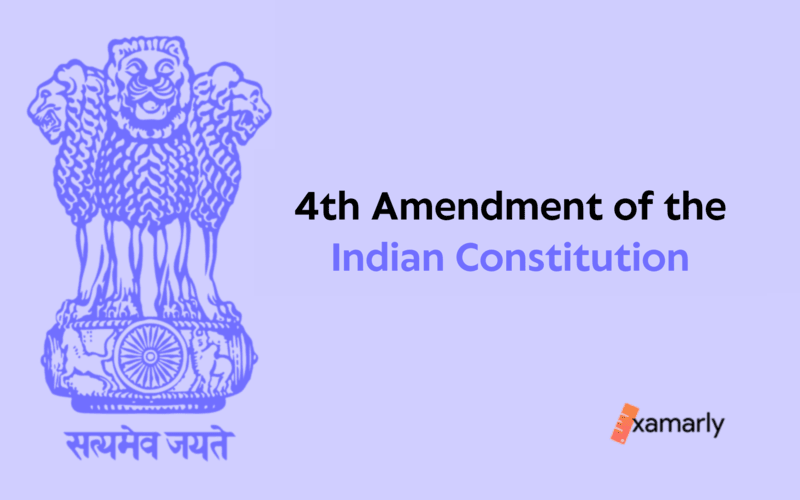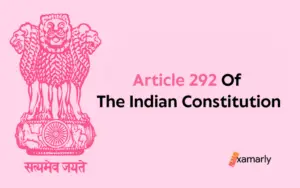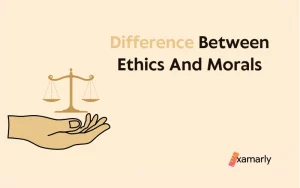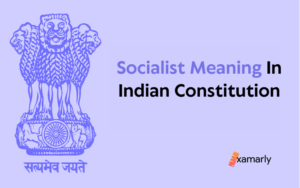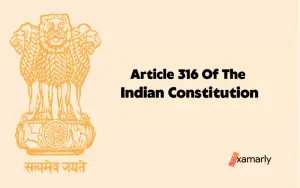After Independence, India saw various tussles between judicial reviews and legislation. It is observed that the different judgments and amendments were implemented in order.
But the Supreme court never misses proving its supremacy by establishing ultimate peace within a conflict.
One of its examples is the fourth constitutional amendment 1955, of the Indian constitution, in the history of India.
Amendments
The 4th amendment of the Indian Constitution overturned a Supreme Court ruling in Bela Banerjee’s case.
Clauses (1) and (2) of Article 31 have been given a relatively broad interpretation by the Supreme Court in recent rulings.
Source: legislative.gov.in
It required compensation in every case of compulsory deprivation of property by the State. In the decision, the Supreme Court mentioned clauses (1) and (2) concerning the validity of Article 31.
These clauses dealt with the same subject and that compensation must be equal to what the owner lost. This decision became the landmark case for the right to compensation in India.
The government ensured to check Article 31(2). They distinguished clauses (1) and clauses (2), as both of these deal with different subjects.
The subjects of concern are- Deprivation and Compulsory Acquisition. There was a provision for compensation under clause (2) of the scope of Article 31A.
It clarified that only at the scene of compulsory acquisition. The acceptability of the compensation became as non-judicial. This amendment widened the scope of Article 31-A. It indulged more regulation in the Ninth schedule.
History of Article 31A
During the hearings of the case Kameshwar Singh v State of Bihar, the Bihar Land Reforms Act, 1950, a major event took place.
Under Article 14, it was declared incorrect as it classified the zamindars by discrimination to ensure compensation.
Article 31A was the latest provision introduced by the government. It provided for the acquisition of property by the state of any estate or of any rights therein, or the extinguishing or modifying of any such rights, no law would be void on the ground of any inconsistency with any of the fundamental rights contained in Articles 14, 19, and 31.
The only Constitutional Provision regarding the determination of compensation was article 31A, but the only exception was that such law should receive the assent of the President. The second provision to Article 31A (1) exaggerates the ceiling limits.
Constitutionality of Article 31A
The constitutionality of clause (a) of Article 31A(1) was endorsed by the Supreme court. This took place while the execution of Ambika Mishra vs the State of Uttar Pradesh.
The entire Article 31A was realized to be unassailable based on stare decisis, a quietus that should not allow being disturbed.
This was declared during the Minerva mills vs Union of India case. The First Amendment in which Article 31A was introduced.
While the Fourth Amendment which substituted new clauses to this Article has been held constitutional, in Waman Rao and I R Coelho case.
Section 3 of the Constitution (Fourth Amendment) Act, 1955 substituted a new clause (1), sub-clauses (a) to (e) for the original clause (1) with retrospective effect.
It does not violate any of the basic or essential features of the Constitution or its basic structure. It was held valid and constitutional within the constituent power of the Parliament of India under the Constitution.
Objectives and Reasons
The scope of clauses (1) and (2) of article 31 widened due to various decisions put up by the Supreme Court.
These decisions hold that for a law to be valid, compensation for land acquisition is under clause (2) of the article.
It mentions that compensation must be provided. It’s provided even if the deprivation of the property was brought about by regulatory legal provisions and wasn’t accompanied by the State acquiring or taking possession of that or any other property right.
Therefore, it was deemed necessary to reiterate the State’s authority over the compulsory acquisition and requisitioning of private property with greater specificity and set it apart from situations in which the application of the State’s regulatory or prohibitory laws led to “deprivation of property.”
It was also necessary to broaden the application of article 31A to include some fundamental welfare law categories.
The Supreme Court’s decision in Saghir Ahmed v. State of Uttar Pradesh is the last one. posed the inquiry. It addressed the possibility of a conflict with an Act establishing a State monopoly in a specific industry or enterprise.
Conflicts included in Article 301 guaranteed freedom in the sphere of trade and commerce. but had not decided on the matter.
The perception had been created by the verdict. The law might have to be defended before the Courts as being “in the public interest” under article 301 or as constituting a “reasonable restriction” under Article 304 despite the clear authority of Parliament or a State Legislature to introduce a State monopoly in a specific area of trade or commerce (b). The necessity of amendment of article 305 was felt.
Generally speaking, the Act modifies Articles 31, 31A, and 305. As a result of the amendment of article 31A, the Ninth Schedule has been expanded by the addition of a few more Acts.
See Also – 5th Amendment Of Indian Constitution
Important Provisions
The second sentence of article 31 has been reinstated. The first half of this amendment is primarily linguistic.
The words denoting different types of property were dropped in favour of the general term “property.” Replaced with “compulsorily obtained or requisitioned” are the terms “taken possession of or acquired”.
They were changed to “except by authorization of law” from “under any law enabling the taking of such possession or such requisition”.
The purpose of these modifications is to separate the application of clause (2) from clause (1).
Furthermore, the modified paragraph makes it plain that the State may only compel the acquisition or requisition of property for “public purposes”.
The issue of “adequacy” of the question of compensation for the acquisition of real estate is finally rendered unjustifiable. (Section Two)
In article 31, a new clause (2A) has been added. It emphasizes the crucial detail about the responsibility of article (2).
It states to provide fair compensation will no longer be applicable. It might happen unless the State or a company owned or controlled by the State receives either the individual’s ownership or right to possession. (Section Two)
Article 31A’s clause (1) has been substituted with a new clause, and the change has been made retroactively.
The amendment has expanded the number of laws about the repeal of zamindari. Articles 14, 19, and 21 no longer apply to some areas of welfare legislation, including those that:
- the State temporarily taking over the management of any property;
- combining two or more businesses;
- the loss or alteration of rights of parties with an interest in corporations; and
- the extinction or alteration of rights arising from any mineral-related contract, lease, or license.
In article 31A’s clause (2), the term “estate” was expanded. It encompasses more than just “intermediaries” interests. The interests of “raiyats and under-raiyats” were taken into account. (Section three)
It has been modified to make both current and future laws under Article 305. It allows for the State’s monopoly of commerce, which is protected from criticism for violating paragraphs 301 and 303. (Section4)
The Ninth Schedule has been amended by seven new enactments. Their comprehensive retrospective validation under article 31B will be the result. (Section 5)
Other goals of the fourth amendment include:
- to place limitations on the total quantity of agricultural land that any one person may own or occupy.
- to sell any land that is held more than the permissible amount.
- and to further alter the rights of the owners and tenants in the agricultural holdings.
- about the proper design of urban and rural areas for practical usage. The use of the vacant and wastelands and the eradication of slum areas.
- control over a company, industrial project, or another asset that serves the public good. Better operation or property management is ensured as a result.
Conclusion
The fourth amendment, of 1955, established the clauses that ensure restrictions on property rights.
It also mentions the inclusion of related bills in Schedule 9 of the constitution. It was introduced to reorganize the states, as per requirements.
The amendment of the provisions of Article 31A proved itself efficient in the history of India.
FAQs
What other parts of Indian Constitution did the 4th amendment make changes to?
Articles 31, 31A, 305 and the Ninth Schedule of the Indian Constitution were amended under this Act.
Which year witnessed the 4th amendment of the Indian Constitution?
The 4th amendment bill got introduced in 1954 and eventually got passed as The Constitution (4th amendment) Act, in 1955.
Which Article from the Indian Constitution has the most significance with the 4th amendment?
Article 31A of the Indian Constitution has the most significance with the 4th amendment of the Indian Constitution.


